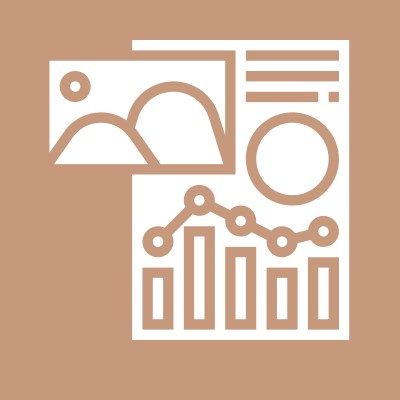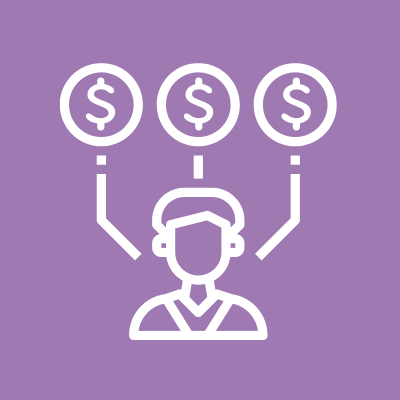Katrina's Classroom
Katrina's Classroom: Teaching Money Skills for Life is a four-part curriculum unit designed for personal finance-related high school classrooms.
{{searchResultSnippet}}
 Back to All
Back to All

This video assignment looks at car insurance and describes who is responsible for losses, how a deductible is applied to a covered loss, and different types of coverage available on car insurance policies.
KRIS: OK… back to the phones, how about Jasmine in Memphis? Hi Jasmine.
JASMINE: Hi Kris! Long-time listener, first time caller. Thank you for taking my call, I’m so excited! Suppose I let a friend borrow my car and he wrecks it. Who is liable for the damage to my car and to others?
KRIS: Jasmine, you don’t have to be driving to be responsible. If a friend wrecks your car, and the accident is his fault, your insurance would likely end up paying for the damages to others, so think twice before letting someone borrow your vehicle.
JASMINE: So my insurance would pay for damages to the car he hit?
KRIS: Yes, that’s right.
JASMINE: So liability insurance doesn’t cover my own car? Thanks Kris, I’ll hang up and listen.
KRIS: No Jasmine, liability won’t pay for your car. If you are at-fault in an accident, the insurance company will only pay for the damage to your car IF you have purchased collision coverage.
Here’s another number. A deductible amount is applied first, then the insurance company pays. It works like this: Say you bump the concrete base of a light pole, and do no damage to the light pole, but you crack your bumper. The auto body shop estimates the repair will cost $400. The deductible amount you carry will be applied to the repair first. If your deductible is $100, you will pay $100 and the insurance company will pay $300. If your deductible amount is $250, you will pay $250 and the insurance company will pay $150. If your deductible amount is $500, you will pay the entire bill yourself.
You pay more to have a low deductible, so the lower your deductible, the higher your premium. You have to decide if the higher premium is worth the lower deductible. Many people choose to pay a lower premium and pay the higher deductible in the event of an accident. Further, insurance companies often charge more premiums following a claim.
Thanks for the call Jasmine. It looks like we’re about out of time; let’s go really quickly to Carol joining us in Louisville, Kentucky. Carol you’re on the air.
CAROL: Hello? Hello?
KRIS:Carol, you’ll have to turn your radio down.
CAROL: Oh OK sorry. So my question is; if I buy collision insurance for when I damage my own car, and I buy liability insurance for when I damage someone else’s car or cause injury. What if someone hits me, I’m injured, and they don’t have insurance?
KRIS: Carol, there are ways to protect yourself.
First, regardless of whether another party has insurance, medical payments coverage can pay for some of your medical expenses and those of passengers in your vehicle, regardless of fault.
Medical payments coverage can fill the gap between different insurance coverage, too; like a gap between car and health insurance coverage, for example. Medical payments can help pay for dental care required after an accident, extended hospital stays for rehabilitation, even funeral expenses. This coverage also helps protect you as a passenger in another vehicle or as a pedestrian should a car hit you.
By purchasing uninsured and underinsured motorist coverage you can address your concern about uninsured drivers. This is additional bodily injury liability coverage that will pay your medical bills, or your passengers’ bills, if the other vehicle involved in an accident has too little or no insurance. In fact, many states require this additional coverage. Laws vary by state so make sure you understand your policy.
CAROL: That’s good to know! One more thing…what if damage occurs to my car, but it’s not from an accident? I don’t know, like a flood…you know what I mean?
KRIS: Oh, yes, of course. That’s comprehensive coverage, or other-than-collision coverage. If purchased, it pays for damage caused to your car by some event other than a car accident. Your flood is an example. Others include hail, fire, theft, and vandalism. Comprehensive coverage is also usually subject to a deductible.
Thanks for the call Carol and thank you to those who called in today—great questions. Well that’s it for the open phones, when we come back we’ll find out what determines the price of insurance.

Katrina's Classroom
Katrina's Classroom: Teaching Money Skills for Life is a four-part curriculum unit designed for personal finance-related high school classrooms.

Insurance
Discuss factors to consider when buying insurance.

Insurance
This lesson covers basic insurance terms, common types of personal insurance, and factors to consider when buying insurance.

When the Unexpected Happens, Be Ready with an Emergency Fund
Learn how to start building an emergency fund and how much to save, in this Page One Economics article.

Risk and Return Grab Bag
Define various savings and investment options.

Life is Risky Business
Recognize the purpose of insurance.

Get Into Stocks
Learn about the process by which companies become publicly owned and traded by issuing stock.

Growing Money: Compound Interest
Explains how to “grow money” using the concept of compound interest.

Insurance
This lesson covers basic insurance terms, common types of personal insurance, and factors to consider when buying insurance.

Mutual Benefit
Learn what investment companies are and how mutual funds work.

Soft Skills
Understand the importance of academic preparedness, soft skills, and professionalism.

Understanding Bonds
Learn about different types of bonds, and the potential risks and return of investments.

Understanding Car Insurance (1/3) Premiums and How Coverage Works
In this video assignment, discover the basic reasons why people buy of car insurance.

Understanding Car Insurance (3/3) Applying for Insurance Coverage
Learn about the insurance application and underwriting process.
{{resourceTitle}}
{{resourceBlurb}}